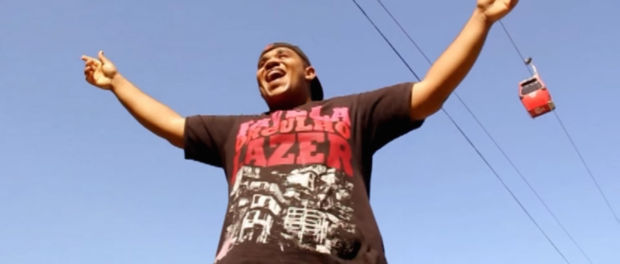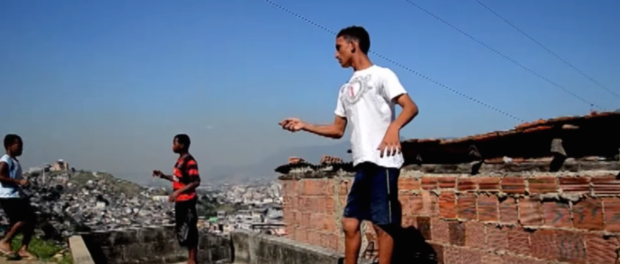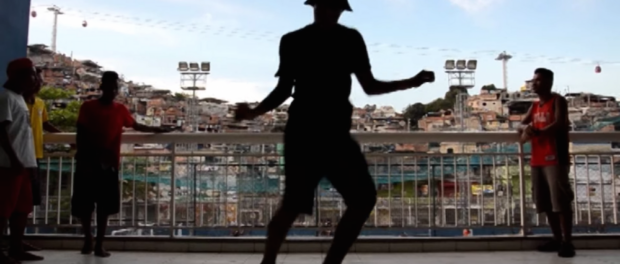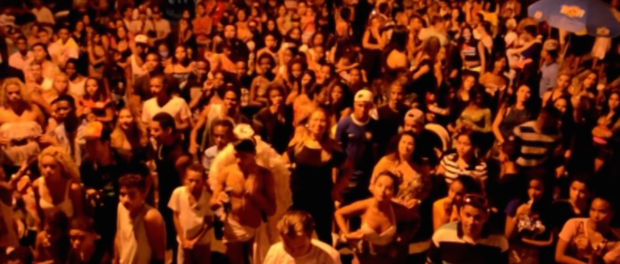
For the original article by Raphael Calazans (a.k.a. MC Calazans) in Portuguese published by Coletivo Papo Reto click here.
If there is one thing that is agreed upon about life in the favelas, by those who live there, those who research them, those who sleep there, keep silent about them, build them and even those who destroy them, it’s this: the coming and going of life here is provisional and full of potential. Pain and joy, as one teacher says. As an old duo of MCs put it: “Sadness and joy here go side by side.”
Life’s rhythm is temporary, intense and happy, seen in the streets of Joaquim de Queiroz in Alemão or Via Ápia in Rocinha: full of people, full of life, full of loud cries, but also sometimes empty, sad, terribly calm and silent. In a place like this, is there the possibility of building and affirming memory?
For a long time I believed that the place where memories reside was like an old shack at the top of a hill, calm and cold: memories are something of the past kept frozen. Always what was. Who had already gone. What we were or what we died as. Memory had the face of a museum: a space where paintings, objects, photos, videos and music stir the emotion of recollection.
Being this way, memory requires a static time period: the past. A place: calm. A face: serious, or at best, with a smile that is half sad and half longing. And the verb tense: the past perfect. That is to say, that aspect of life that, like the last train, has left and is not returning. Memory, understood in this way, is that which stirs recollection, freezes it and stores it in museums: whether classical with dinosaurs or modern with videos, clothes and shacks.
So, how do you talk about memory in a place that is extremely fleeting, transitory, that swallows up the past, pushes the future aside and lives intensely in the present? One lesson I learned in Alemão and through funk is that the answer lies in the question: memory is life’s present. A beautiful, wrapped present. Given to a busy, intense life. Who wraps it up? Funk. What’s inside the wrapping? The heart.
I’ll explain better. You see memory, unlike in the classical sense, doesn’t stir up the recollection of what has passed. Rather, it reclaims life and gives feeling and significance to that which has been lost. For example, central to the funk narrative is an eternal longing for friends (moments, homes, places, affections) that are long gone! The recalling of memories through the pain of longing in funk is the force that reclaims life. It’s as if those who have gone are brought back. We revive who we were. We summon back to the present the same Joaquim de Queiroz Street that is full of people, that old feeling of having sugar cane juice at the market.
Memory in a favela with funk culture, while not classically preserved, is preserved. It’s not permitted in a museum. And do you know why not? Because funk is the museum. It keeps giving life to this longing of all that is missed, through the radio, Facebook, YouTube, and parties. Absence is transformed into presence. What is not lost to us gets lost when left in a museum. It stays with us, eternalized, and brings to life everything that was dead. Funk isn’t a picture, a photo, a dinosaur or anything that once was. Funk is music. And to sing it means reviving and giving life to who we were, to those who have gone and also expressing what we want to be. This way, friends are not left behind forever in a [photo] album. They are put in the lyrics and the beat of the drums. Only then is it possible to see the roads, alleys, homes of pain and joy as places where potential overcomes the temporary.
So in the favela memory is active. It’s a flag to reclaim the right to life. The favela refuses to deposit our nostalgia and memories in some place. It’s impossible to have a past if one can’t guarantee one’s future. And so, the place for memories in the favela is in the present. A present that is given to life. Wrapped and made alive through funk. Inside this package lies a heart. And in this present there is a card which is an invitation: we are all invited to awaken these memories and live. And if there is one thing about the past and memory that we draw on, it is that the gift of memory given to life is an invitation to remember who we are and can never stop being: favelados. With all the narratives, discussions, and struggles this involves.
Funk, in truth, colors and stores memories. But not physically in boxes. It is sung, shared, sad or joyous, busy and empty. It can be electric like Nego do Borel or chill like Mc Marcinho. Memory is a funk song that tells the stories of our lives, cultures and roots, and brings them to life so they never die.
Watch the video to MC Calazans’ song “Funk Lives in Me” here:



